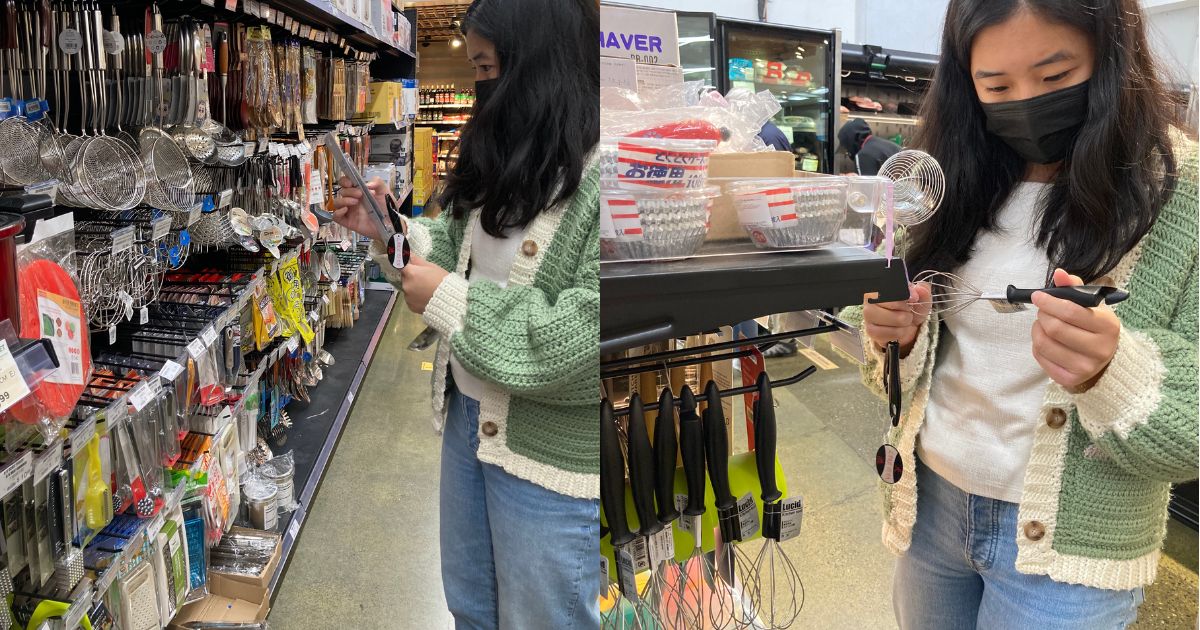There was a time I’d think nothing of it when my sushi takeout came in black plastic containers, or when I used my black plastic spatula to cook. But now, the results of our new peer-reviewed research have made me look at these items in a new light and increased my concern about how we are unnecessarily exposed to harmful chemicals in plastics.
In this study, published in the scientific journal Chemosphere, we found a variety of up to nine toxic flame retardants in black plastic household items, including in some of the places you would least expect and least welcome them: kitchen utensils, sushi and other food takeout trays, and toys. These findings are especially concerning because flame retardants can leach out of the plastic they are added to, and are associated with a range of harmful health effects including cancer, endocrine disruption, and reproductive and developmental toxicity.
Flame retardants used in electronics were found in black plastic household items.
We found that some household items made of black plastic contained a mixture of flame retardants, sometimes at very high concentrations—one item contained flame retardants at 2.3% of its total weight, and a sushi tray tested positive for a banned flame retardant at 1.2% of its total weight. The flame retardants detected are known to be used in electric and electronic products, such as in the black plastic of TV enclosures, and included the same chemicals we previously found in our television testing in 2017 and 2019. Besides the banned flame retardant deca-BDE, we also found newer flame retardants, such as a hormone-disrupting bromophenol, which we recently detected in human breast milk.
Higher levels of flame retardants were found in plastics known for use in electronics.
For this study, we were fortunate to collaborate with Dr. Sicco Brandsma of Vrije University in the Netherlands, an analytical chemist with particular expertise in flame retardants and electronics. Dr. Brandsma measured the levels of flame retardants found in our products, and was also able to determine the polymer types of the products tested. Interestingly, we found higher levels of flame retardants in plastics often used in electronics, such as ABS and HIPS, compared to plastics not typically used in electronics, like polypropylene and polyamide nylon. ABS and HIPS both contain styrene, a carcinogen made from highly hazardous benzene and ethylbenzene. In fact, the largest use of ethylbenzene is styrene production. These plastics are already concerning due to the hazardous chemicals from which they are made, making it even more appalling to find they were associated with higher levels of flame retardants.
These findings support our hypothesis that companies are making household products using black plastic recycled from electronic enclosures.
We know that some electronics companies put highly hazardous flame retardants in their products, and thought it was pretty likely that some of that flame-retarded plastic would be recycled and make its way into household items like toys and kitchen utensils. And that’s what we found: flame retardants linked to cancer and hormone disruption are ending up in products we use for eating or preparing food, or that our kids play with.
Finding flame retardants in toys and food-contact items is especially worrisome because studies have shown these chemicals can leach out of kitchen utensils into food, as well as children’s saliva through mouthing of toys. There is no reason for these household products to contain flame retardants. It’s disturbing to learn that the plastic materials used to make packaging, toys, and kitchen utensils could be contaminated with toxic chemicals because the states and federal government aren’t banning their use. This failure to keep harmful flame retardants out of all products means we are not only exposed by way of products like electronics, but also when they circulate through our environment and contaminate products where we don’t expect them.
Policy and market change can protect us from toxic chemicals.
This study is a wake-up call about how the lack of transparency and failure to keep dangerous chemicals out of plastic products are a threat to public health and the environment. It further makes the case that toxic flame retardants should be banned from all plastic products, from electronics to food packaging, and that certain plastics like styrene are more toxic than others. Most people think it’s a good thing to have recycled content in products, but these results demonstrate how difficult it can be to keep harmful chemicals out of the plastic waste stream. At TFF, we know that to reduce these unnecessary exposures to harmful chemicals, we need policy and market change to ban the use of harmful chemicals and plastics that can’t be safely recycled.
Since receiving the results for this study, I have replaced all my black plastic kitchen utensils with plastic-free wooden or stainless steel ones. And I opted for reusable glass containers instead of keeping and reusing my black plastic takeout containers. But it shouldn’t come down to us as consumers to protect ourselves from these hidden contaminants. Policymakers and retailers should make sure these toxic chemicals and plastics are replaced with safer solutions so we can cook and play knowing the products we use are safe.
We’re also in an exciting time where a Global Plastics Treaty is being negotiated, which will set a plan and timeline for reducing plastics. Polls have found that people in the U.S. almost universally support reducing plastic production, and as the treaty gets finalized this fall, the U.S. and other governments have a chance to take bold steps phasing out harmful plastics and chemical additives.
Right now is the time to call on our elected leaders to protect us from harmful plastics.
We knew even before we started this study that there is no reason for our food-contact items, kitchen utensils, or toys to contain harmful flame retardants. While I’m doing what I can to switch my household items to safer alternatives, I hope that studies like this, along with the ever-growing body of research proving how dangerous plastics are, will help push our governments and retailers to act now and shift towards safer materials. I’m grateful to Nancy Uding, the former TFF staff member who kicked this research off, and all our partners who are helping us better understand this problem. We certainly know enough now to warrant state, federal, and international action.





